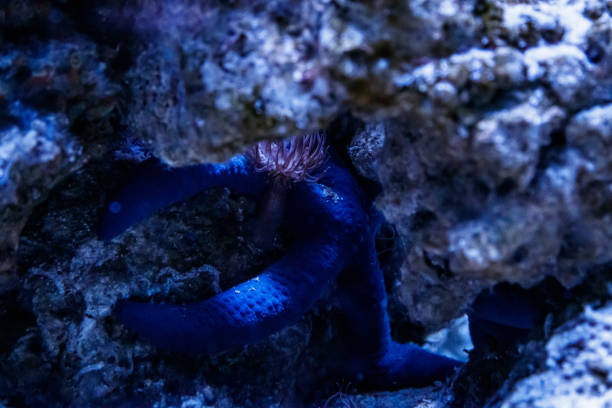Unraveling the Enigma of Coral Reef Fish Sleeping Patterns
In the vibrant underwater world of coral reefs, a peculiar phenomenon has long puzzled marine biologists and diving enthusiasts alike. As the sun sets and darkness envelops the ocean, how do the myriad species of coral reef fish find rest in an environment teeming with nocturnal predators? This intriguing question has sparked a wave of research, revealing surprising adaptations and behaviors that challenge our understanding of fish biology and sleep.

The Basics of Fish Sleep
Unlike mammals, fish do not experience sleep in the traditional sense. They lack eyelids and cannot close their eyes, yet they still require periods of rest to conserve energy and maintain biological functions. Fish sleep is characterized by reduced activity, slower breathing, and a lowered response to stimuli. However, the methods by which different species achieve this state of rest vary widely, especially in the dynamic environment of a coral reef.
Mucus Cocoons: Nature’s Sleeping Bag
One of the most remarkable sleep adaptations observed in coral reef fish is the use of mucus cocoons. Species such as parrotfish secrete a protective mucus envelope around their bodies before settling down to rest. This slimy sleeping bag serves multiple purposes: it masks the fish’s scent from nocturnal predators, provides a barrier against parasites, and may even alert the fish to approaching danger through vibrations.
The Art of Wedging
Many reef fish have developed a technique known as wedging to secure themselves during rest periods. Species like wrasses and parrotfish will tuck themselves into crevices or wedge themselves between coral branches. This behavior not only provides physical protection but also allows the fish to remain relatively motionless without drifting away in ocean currents.
Schooling for Safety
Some coral reef fish species have adopted a communal approach to sleeping. Schooling fish, such as certain species of snappers and grunts, will gather in large groups during the night. These aggregations offer safety in numbers, with individuals taking turns to remain vigilant while others rest. This cooperative behavior significantly reduces the risk of predation and allows for more restful sleep cycles.
Nocturnal Vigilance
Not all reef fish sleep at night. Many species have evolved to be nocturnal, remaining active during the darkest hours when diurnal predators are at rest. These night-dwellers, including moray eels and lionfish, have developed enhanced sensory capabilities to navigate and hunt in low-light conditions. For these species, daytime becomes the period of reduced activity and rest.
The Role of Circadian Rhythms
Recent studies have revealed that coral reef fish possess intricate circadian rhythms, internal biological clocks that regulate their sleep-wake cycles. These rhythms are influenced by environmental cues such as light levels and tidal patterns. Understanding these circadian rhythms is crucial for conservation efforts, as human activities like artificial lighting and noise pollution can disrupt these natural cycles, potentially impacting fish health and behavior.
Sleep Deprivation and Its Consequences
Research into sleep deprivation among coral reef fish has yielded surprising results. Studies have shown that fish subjected to prolonged periods without rest exhibit decreased cognitive function, altered swimming patterns, and reduced ability to avoid predators. These findings underscore the critical importance of sleep for fish, challenging previous assumptions about their neurological needs.
Implications for Conservation
The study of coral reef fish sleeping patterns has far-reaching implications for marine conservation. As coral reefs face unprecedented threats from climate change, pollution, and overfishing, understanding the sleep requirements of reef inhabitants becomes crucial. Conservation strategies must consider the complex nocturnal behaviors and rest needs of these fish to ensure the long-term health and biodiversity of coral reef ecosystems.
Technological Advancements in Research
Advancements in underwater imaging and monitoring technologies have revolutionized the study of fish sleep behaviors. High-definition cameras equipped with infrared capabilities now allow researchers to observe fish behavior throughout the night without disturbing their natural patterns. These tools, combined with data from acoustic tracking devices, provide unprecedented insights into the nocturnal lives of coral reef fish.
Future Directions and Unanswered Questions
While significant progress has been made in understanding coral reef fish sleep, many questions remain unanswered. How do different species’ sleep patterns vary across seasons or during migration? What are the long-term effects of human-induced disruptions to fish sleep cycles? As research continues, the answers to these questions will not only expand our scientific knowledge but also inform conservation strategies to protect these vital marine ecosystems.
The enigmatic world of coral reef fish sleep continues to captivate researchers and marine enthusiasts alike. From the innovative use of mucus cocoons to the complex social behaviors exhibited during rest periods, these adaptations highlight the incredible diversity and resilience of marine life. As we delve deeper into the mysteries of the ocean, the sleeping habits of coral reef fish serve as a testament to the wonders that still await discovery beneath the waves.





